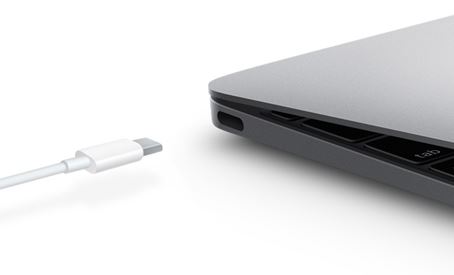The USB Type C craze has begun
 It’s official: Apple’s new MacBook is opening the race for devices supporting the USB Type-C connector. External drive manufacturer LaCie has already gained the pole-position with its Porsche Design Mobile Drive, in three iterations: 500GB, 1TB and 2TB. LaCie has made this external drive, to specifically complement the new MacBook’s design.
It’s official: Apple’s new MacBook is opening the race for devices supporting the USB Type-C connector. External drive manufacturer LaCie has already gained the pole-position with its Porsche Design Mobile Drive, in three iterations: 500GB, 1TB and 2TB. LaCie has made this external drive, to specifically complement the new MacBook’s design.
There is no question about the USB Type-C connector’s fate in obliterating previous standards, especially USB 2.0, which is officially waiting to be discontinued. While it’s true that peripherals are increasingly energy efficient, performance requirements have been keeping the pace.
By such token, one thing is certain: USB 2.0 will follow the same fate as the ugly 5V power cord that has accompanied many external devices now obsolete.
One question remains: how long before USB 3.0 overstays its welcome? USB Type-C, or USB 3.1, shares very little in common with its immediate predecessor, especially as users already favor the many perks that come with the new standard, such as the bi-directional connector, the higher transfer speed, and the ability to power more devices, not to mention being able to connect external displays.
The choice of going with the USB Type-C connector rather than Apple’s proprietary Thunderbolt in the new MacBook is perhaps telling of what we can expect in future MacBooks as well, and perhaps even in iOS devices.
Some have argued “why only one connector?”, while overlooking the ultraportable nature of the new MacBook, where wireless connectivity is far more crucial than wired. USB Type-C supports an array of adapters able to split the one available port, into multiple ones, allowing the laptop to connect to a power source, as well as communicating with peripherals, like an external drive or a scanner. An increasing number of peripherals are also able to function wirelessly, including printers. This eliminated the need for additional wired connectors.
As mentioned previously, the chances for USB 3.1 connectors to be integrated in iOS devices are good, although it’s doubtful that the iPhone will support it, since there are plenty of adapters capable of handling wired communication between iPhone devices and USB Type-C interfaces.
Future versions of the iPad (Pro?) are likely candidates. Future revamps of Apple TV could benefit from the new interface as well.